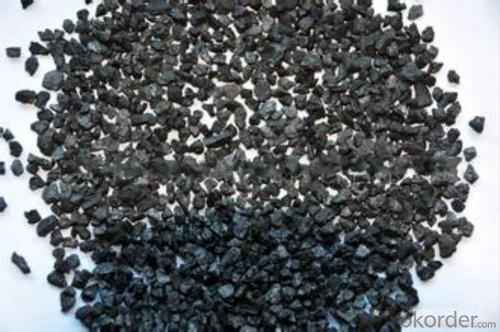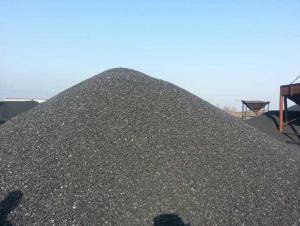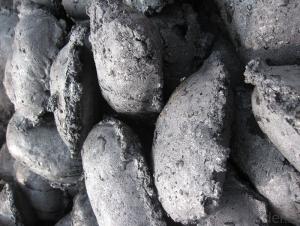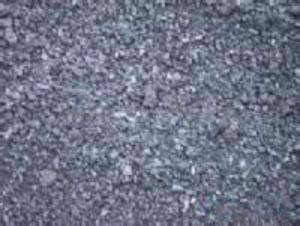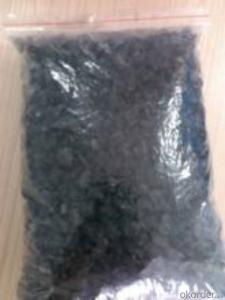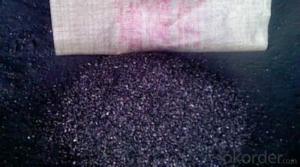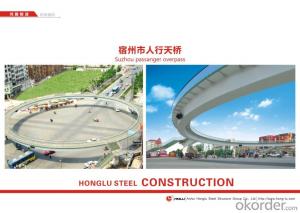S0.5% GCA with Ash 4% for steel plant made in China
- Loading Port:
- Tianjin
- Payment Terms:
- TT OR LC
- Min Order Qty:
- 21 m.t.
- Supply Capability:
- 1010 m.t./month
OKorder Service Pledge
OKorder Financial Service
You Might Also Like
Introduction:
Calcined anthracite can be called carbon additive, carbon raiser, recarburizer, injection coke, charging coke, gas calcined anthracite.It is playing more and more important role in the industry
Best quality Anthracite as raw materials through high temperature calcined at over 2000℃ by the DC electric calciner with results in eliminating the moisture and volatile matter from Anthracite efficiently, improving the density and the electric conductivity and strengthening the mechanical strength and anti-oxidation. It has good characteristics with low ash, low resistivity, low sulphur, high carbon and high density. It is the best material for high quality carbon products. It is used as carbon additive in steel industry or fuel.
Features:
G-High Calcined Anthracite is produced when Anthracite is calcined under the temperature of 1240°C in vertical shaft furnaces. G-High Calcined Anthracite is mainly used in electric steel ovens, water filtering, rust removal in shipbuilding and production of carbon material. We are professional in quality control and customer service
Specifications:
F.C.% | 95MIN | 94MIN | 93MIN | 92MIN | 90MIN | 85MIN | 84MIN |
ASH % | 4MAX | 5MAX | 6 MAX | 6.5MAX | 8.5MAX | 12MAX | 13MAX |
V.M.% | 1 MAX | 1MAX | 1.0MAX | 1.5MAX | 1.5MAX | 3 MAX | 3 MAX |
SULFUR % | 0.3MAX | 0.3MAX | 0.3MAX | 0.35MAX | 0.35MAX | 0.5MAX | 0.5MAX |
MOISTURE % | 0.5MAX | 0.5MAX | 0.5MAX | 0.5MAX | 0.5MAX | 1MAX | 1MAX |
Pictures
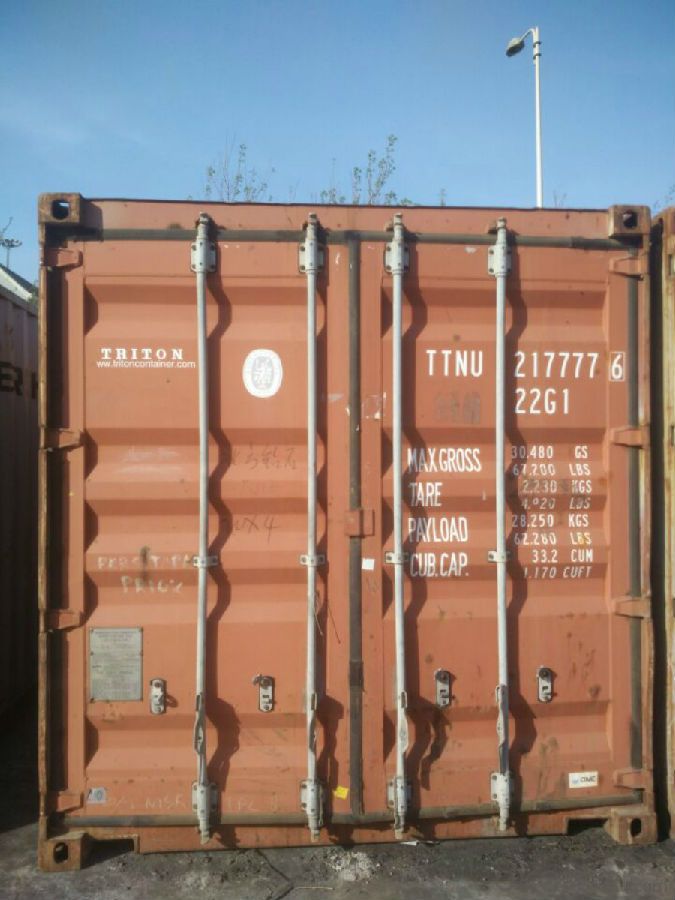
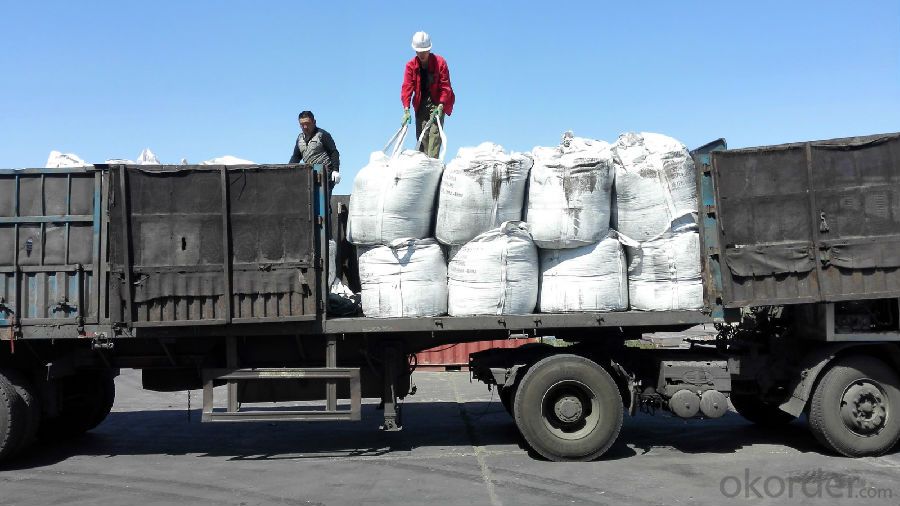
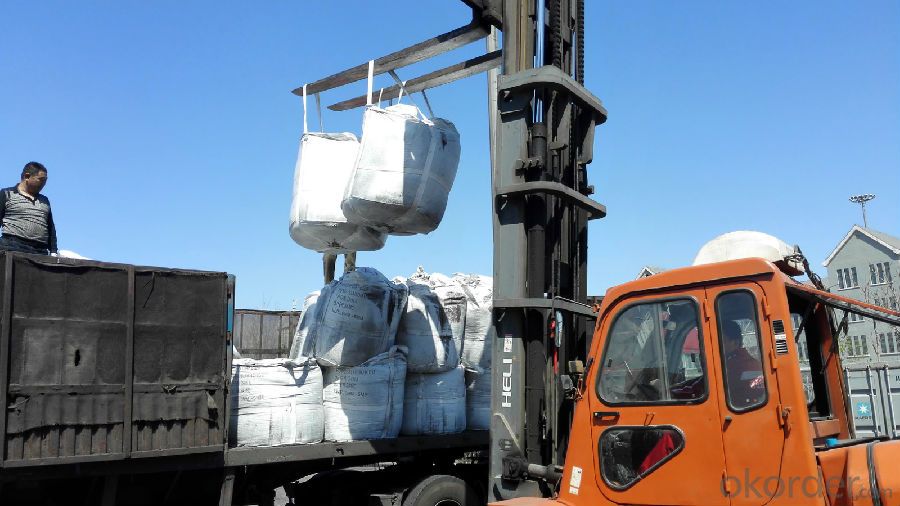
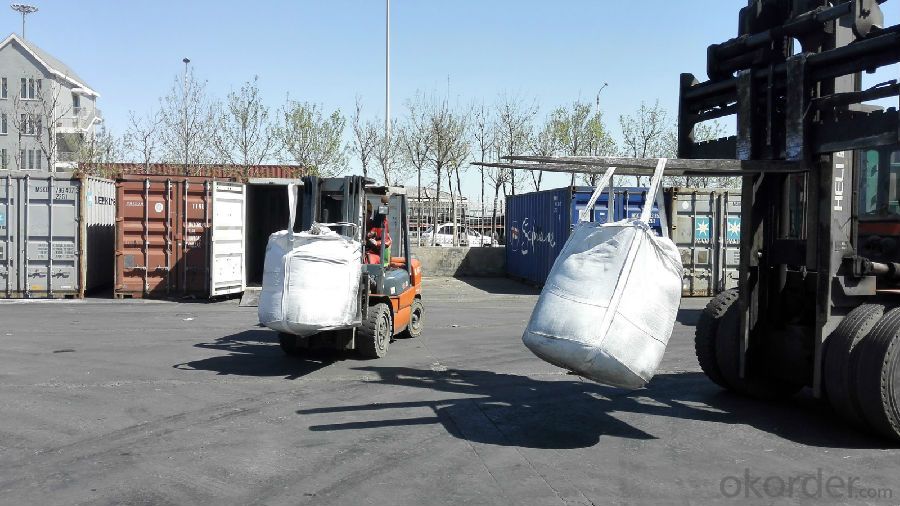
FAQ:
Packing:
(1). Waterproof jumbo bags: 800kgs~1100kgs/ bag according to different grain sizes;
(2). Waterproof PP woven bags / Paper bags: 5kg / 7.5kg / 12.5kg / 20kg / 25kg / 30kg / 50kg small bags;
(3). Small bags into jumbo bags: waterproof PP woven bags / paper bags in 800kg ~1100kg jumbo bags.
Payment terms
20% down payment and 80% against copy of B/L.
Workable LC at sight,
Any questions, pls kindly contact us
- Q: How does carbon contribute to the strength of concrete?
- Carbon can contribute to the strength of concrete in several ways. One of the primary ways is through the use of carbon nanotubes (CNTs) or carbon fibers. These materials are added to the concrete mixture, acting as reinforcement and enhancing its mechanical properties. When CNTs or carbon fibers are incorporated into the concrete, they create a network of small, strong, and lightweight particles. This network helps to improve the overall strength and durability of the concrete, making it more resistant to cracking, flexing, and other forms of structural damage. Additionally, the carbon particles also enhance the bonding between the cement paste and the aggregates in the concrete. This improved bonding increases the interfacial strength, resulting in a stronger and more cohesive concrete matrix. Furthermore, carbon can also contribute to the strength of concrete by acting as a pozzolan. Pozzolans are materials that react chemically with calcium hydroxide, a byproduct of cement hydration, to form additional cementitious compounds. These compounds fill in the gaps between cement particles, resulting in a denser and stronger concrete structure. Carbon black, a type of finely divided carbon, is commonly used as a pozzolan in concrete mixes. Overall, the incorporation of carbon in concrete, whether through carbon nanotubes, carbon fibers, or as a pozzolan, can significantly enhance its strength and performance. By reinforcing the concrete matrix, improving bonding, and filling in gaps, carbon helps to create a more durable and robust material suitable for various construction applications.
- Q: What are the effects of carbon emissions on agriculture?
- Carbon emissions have significant effects on agriculture, primarily through climate change. Increased levels of carbon dioxide in the atmosphere lead to rising temperatures, changes in precipitation patterns, and more frequent extreme weather events. These changes disrupt agricultural systems by altering growing seasons, reducing crop yields, and increasing the prevalence of pests and diseases. Additionally, carbon emissions contribute to the acidification of oceans, which can harm marine ecosystems and impact fisheries, further affecting food production. Overall, carbon emissions pose a serious threat to agricultural productivity and food security.
- Q: What is the greenhouse effect?
- The greenhouse effect refers to the process by which certain gases in the Earth's atmosphere trap heat from the sun and prevent it from escaping back into space. This natural phenomenon is crucial for maintaining the planet's temperature within a range suitable for life. However, human activities, such as burning fossil fuels and deforestation, have intensified the greenhouse effect, leading to global warming and climate change.
- Q: How are carbon compounds classified?
- Carbon compounds can be categorized according to the type and number of atoms bonded to carbon atoms. There are various types of carbon compounds, including hydrocarbons, alcohols, aldehydes, ketones, carboxylic acids, esters, ethers, amines, amides, and more. Hydrocarbons are carbon compounds solely consisting of carbon and hydrogen atoms. They can be further divided into two main groups: aliphatic hydrocarbons and aromatic hydrocarbons. Aliphatic hydrocarbons include alkanes, alkenes, and alkynes, which are classified based on the carbon-carbon bonds they possess. On the other hand, aromatic hydrocarbons have a ring structure and are known for their aromaticity. Alcohols are carbon compounds with a hydroxyl (-OH) group attached to a carbon atom. They are categorized based on the number of hydroxyl groups connected to the carbon atom. For instance, methanol is a monohydroxy alcohol, while ethylene glycol is a dihydroxy alcohol. Aldehydes and ketones are carbon compounds containing a carbonyl group (C=O). Aldehydes have the carbonyl group attached to a terminal carbon atom, whereas ketones have it attached to an internal carbon atom. Their names are determined by the number and position of the carbonyl group within the molecule. Carboxylic acids are carbon compounds with a carboxyl group (-COOH). They are named by replacing the -e ending of the corresponding hydrocarbon with -oic acid. For example, methane becomes methanoic acid. Esters are carbon compounds derived from the reaction between a carboxylic acid and an alcohol. They have the general formula RCOOR’, where R and R’ can represent any alkyl or aryl group. Often, they are named based on the alcohol and acid used in their formation. Ethers are carbon compounds in which an oxygen atom is bonded to two alkyl or aryl groups. Their names are formed by listing the alkyl or aryl groups in alphabetical order followed by the word "ether". Amines are carbon compounds with a nitrogen atom bonded to one or more alkyl or aryl groups. They are named by adding the suffix -amine to the name of the alkyl or aryl group attached to the nitrogen atom. Amides are carbon compounds with a carbonyl group (C=O) bonded to a nitrogen atom. They are named by replacing the -oic acid or -ic acid endings of the corresponding carboxylic acid with -amide. In summary, the classification of carbon compounds is based on their functional groups and the arrangement of atoms surrounding the carbon atom. These classifications aid in categorizing and studying the diverse range of carbon compounds found in nature and synthesized in laboratories.
- Q: What is carbon black pigment?
- Carbon black pigment is a fine black powder derived from the incomplete combustion of hydrocarbons. It is primarily composed of elemental carbon and is widely used as a pigment in various industries, including rubber, plastics, inks, coatings, and cosmetics, to impart a deep black color and enhance the strength and durability of the materials it is incorporated into.
- Q: What materials can be carbonitriding?
- Low temperature carbonitriding for high alloy tool steel, high-speed steel tools, etc., in temperature carbonitriding is under great pressure not only in carbon steel wear parts, high temperature carbonitriding is mainly used for medium carbon steel and alloy steel under great pressure.
- Q: What are the basic structures of iron carbon alloys?
- Ferrite: a solid solution in which carbon is dissolved in alpha -Fe, called ferrite. The symbol is Fe. Ferritic carbon content is very low, at 727 degrees of 0.0008%, and its mechanical properties similar to pure iron, strength and hardness is not high, plasticity and toughness good.Austenite: a solid solution in which carbon is dissolved in gamma -Fe, called austenite.
- Q: What are the properties of carbon-based textiles?
- Carbon-based textiles offer several distinct advantages in different applications. To begin with, they demonstrate exceptional strength and durability. Renowned for their high tensile strength, carbon-based textiles can resist stretching and tearing, enabling them to withstand harsh conditions and maintain their integrity over time. Moreover, these textiles possess excellent thermal conductivity, efficiently managing heat. This quality proves beneficial in industries like aerospace, automotive, and electronics, where effective heat dissipation is crucial to prevent system failures. Additionally, carbon textiles exhibit remarkable resistance to chemical corrosion, remaining structurally intact even when exposed to various chemicals, acids, and solvents. This resistance makes them ideal for applications in the chemical industry, where contact with corrosive substances is common. Another notable attribute of carbon textiles is their inherent flame resistance. They possess a high resistance to ignition and do not easily propagate flames. Consequently, they find use in environments where fire safety is paramount, such as protective clothing for firefighters and military personnel. Furthermore, carbon-based textiles display good electrical conductivity, making them suitable for electronics and electrical engineering applications. They effectively conduct electricity and dissipate static charges, reducing the risk of electrical malfunctions or damage. Lastly, carbon textiles have a low coefficient of thermal expansion, meaning they undergo minimal expansion or contraction with temperature changes. This property ensures their dimensional stability, guaranteeing that they maintain their shape and size under varying thermal conditions. In conclusion, carbon-based textiles possess a combination of strength, durability, thermal conductivity, chemical resistance, flame resistance, electrical conductivity, and dimensional stability. These properties render them highly versatile and suitable for a wide range of applications across various industries.
- Q: How does carbon affect the properties of steel?
- Carbon is a crucial element in the production of steel and plays a significant role in determining its properties. The amount of carbon present in steel has a direct impact on its hardness, strength, and overall performance. By adding carbon to iron, the base metal of steel, it becomes significantly stronger and more durable. This is because the carbon atoms are able to occupy the spaces between iron atoms, preventing the metal from sliding or deforming easily. The higher the carbon content, the harder and stronger the steel becomes. Moreover, carbon also influences the steel's ability to be heat treated and its response to various manufacturing processes. When steel is heated and rapidly cooled, a process known as quenching, the presence of carbon allows for the formation of harder and more brittle structures, such as martensite. On the other hand, lower carbon content allows for the formation of softer and more ductile structures. In addition to its impact on strength and hardness, carbon also affects the steel's corrosion resistance. Higher carbon content can lead to reduced corrosion resistance, making the steel more susceptible to rust and other forms of degradation. This is why stainless steel, which contains a higher amount of chromium and low carbon content, is often chosen for applications where corrosion resistance is crucial. To summarize, carbon greatly influences the properties of steel. It enhances its strength and hardness, allows for heat treatment and response to manufacturing processes, and affects its corrosion resistance. The careful control of carbon content in steel is vital in order to achieve the desired properties for specific applications.
- Q: What are the economic impacts of carbon emissions?
- Carbon emissions have wide-ranging and significant economic effects. These emissions, primarily from burning fossil fuels, contribute to climate change and global warming. The resulting climate changes directly impact various economic sectors and can have both short and long-term economic consequences. Dealing with the effects of climate change is one of the most noticeable economic impacts of carbon emissions. As a result of these emissions, extreme weather events like hurricanes, floods, and droughts become more frequent and intense. These events cause extensive damage to infrastructure, homes, and businesses, resulting in significant economic losses. For instance, in 2017, the United States experienced a record-breaking hurricane season, with hurricanes Harvey, Irma, and Maria causing approximately $265 billion in damages. Furthermore, carbon emissions also affect agricultural productivity. Climate change alters temperature and precipitation patterns, disrupting crop production and reducing yields. This, in turn, impacts food prices and availability, affecting both consumers and farmers. Additionally, carbon emissions contribute to ocean acidification, which harms marine ecosystems and disrupts fisheries, leading to economic losses for fishing communities. Moreover, carbon emissions have implications for public health, creating economic burdens. Air pollution caused by carbon emissions can lead to respiratory and cardiovascular illnesses, increasing healthcare costs and reducing workforce productivity. Additionally, extreme heatwaves, exacerbated by carbon emissions, negatively impact worker productivity and labor capacity, affecting economic output. To mitigate the economic impacts of carbon emissions, many countries have implemented policies and regulations to reduce greenhouse gas emissions. These policies often involve carbon pricing mechanisms, such as carbon taxes or cap-and-trade systems, that aim to incentivize the transition to cleaner energy sources and decrease carbon emissions. While these policies may have short-term economic costs, they also create opportunities for innovation and the development of green technologies, leading to long-term economic benefits. In conclusion, the economic impacts of carbon emissions are significant and diverse. They range from the costs associated with climate-related disasters to the effects on agriculture, public health, and productivity. Addressing these impacts through effective climate policies is vital to mitigate economic risks and promote a sustainable and resilient economy.
Send your message to us
S0.5% GCA with Ash 4% for steel plant made in China
- Loading Port:
- Tianjin
- Payment Terms:
- TT OR LC
- Min Order Qty:
- 21 m.t.
- Supply Capability:
- 1010 m.t./month
OKorder Service Pledge
OKorder Financial Service
Similar products
Hot products
Hot Searches


